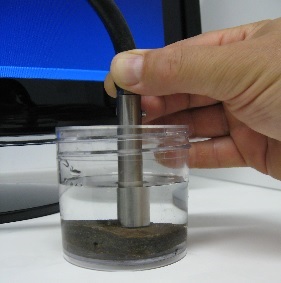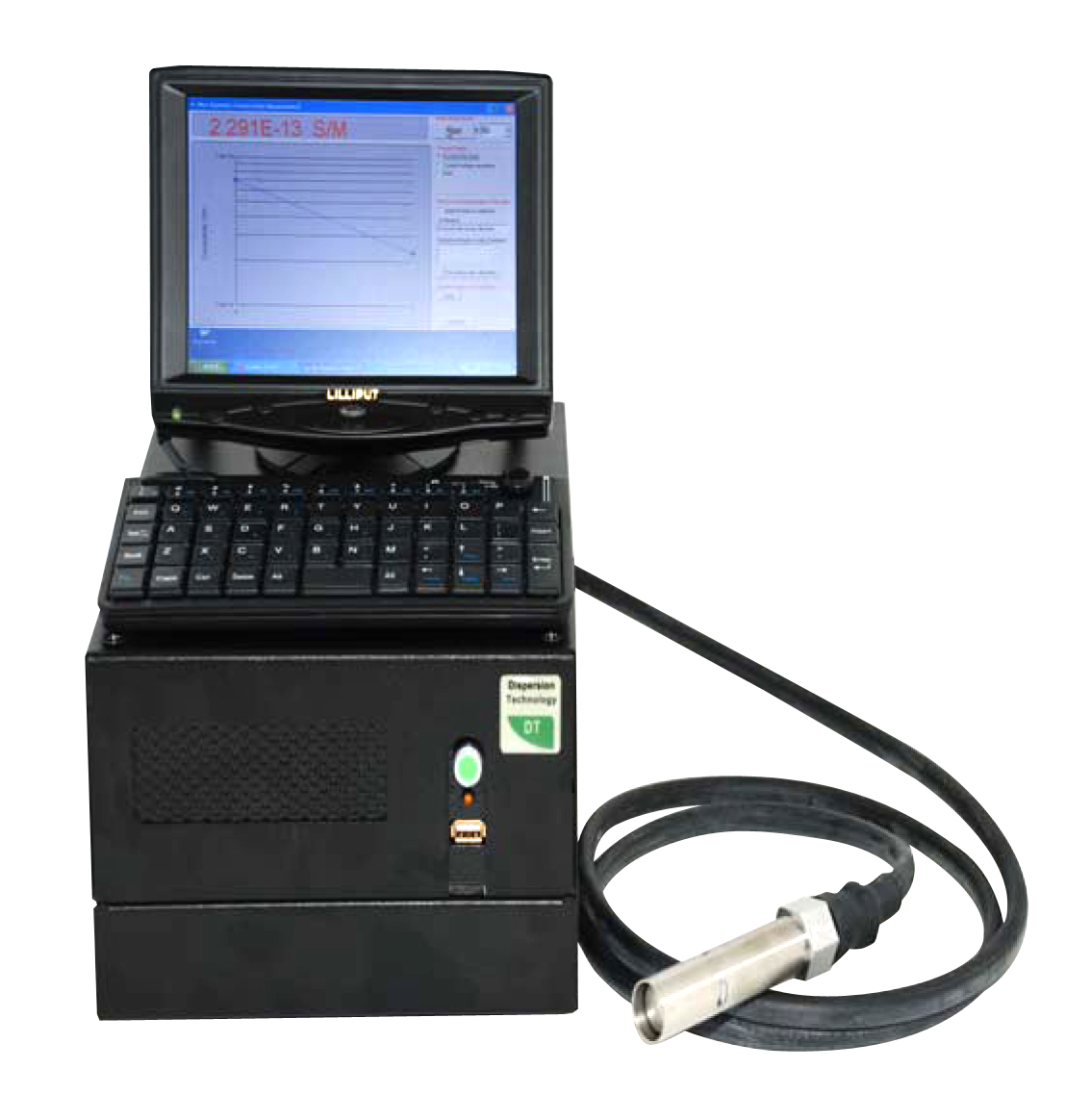DEVICES MEASURING ELECTRIC CONDUCTIVITY
Conductivity of aqueous solutions
There are many different devices suitable to measure electric conductivity in aqueous solutions. Conductivity of such systems is rather high, above 0.0001 S/m and up to 10 S/m. If one wants to measure electric conductivity at this high range, he has a wide selection of devices from which to choose.
There are several parameters that distinguish such devices. One of the most important one is the way of preventing electrode polarization at the rather high ionic strength of the aqueous solutions. Many devices use black platinum electrodes for increasing electrode surface area and, consequently, reducing polarization effects. This method works well for typical dilute aqueous systems. It might have problems with concentrated slurry due to particles building deposit on the rough surface of such electrodes. It might be very hard to clean them.
Alternative way of eliminating electrode polarization is applying high frequency electric field. We selected this way for our aqueous conductivity probe, Option OP004. It functions at 3 MHz. This completely eliminates electrode polarization. Design of the probe is very simply – it has flat polished surface. It is very easy to clean. Photo below illustrates measurement of a sandstone conductivity when it is saturated with water. Such measurement allows characterization of porosity according to the DTI Option OP0014, see page Products, Options.

Conductivity of non-aqueous solutions
The situation with non-aqueous conductivity is quite different. First of all, it is orders of magnitude lower than in aqueous solutions. Generally, it ranges from 10-12 to 0.0001 S/m. This low conductivity level requires a completely different approach to the measurement, as compared to the aqueous solutions.
Application of the AC electric field is still desirable for preventing electrodes polarization, but not at those high frequencies. Conductivity is completely capacitive at MHz range for low conducting liquids. In order to sense ionic conductivity frequency should not exceed Maxwell-Wagner frequency, which is on scale of tens Hz for non-polar liquids.

Secondly, design of the probe should be very different. Cell constant must be much smaller because we want to measure much smaller current due to much lower conductivity for the same applied voltage. This is usually achieved by using coaxial cylinders chamber with particular cell constant. That is how sensor of Non-aqueous conductivity meter DT-700 is built, see photo above. Driving electric field is AC for several frequencies from 1 to 20 HZ, or even DC. DT-700 is capable of measuring conductivity within very wide range from 10-12 up to 0.0001.
References
Application of this instrument for characterizing non-polar liquids and dispersions can be found in several published papers, see for example:
One of the most interesting applications of this method is characterization of a surfactant adsorption from the non-polar liquids into porous materials. This application is described in the following paper:
Combination of our two probes allow covering complete conductivity range, from pure toluene up to sea water and higher.
